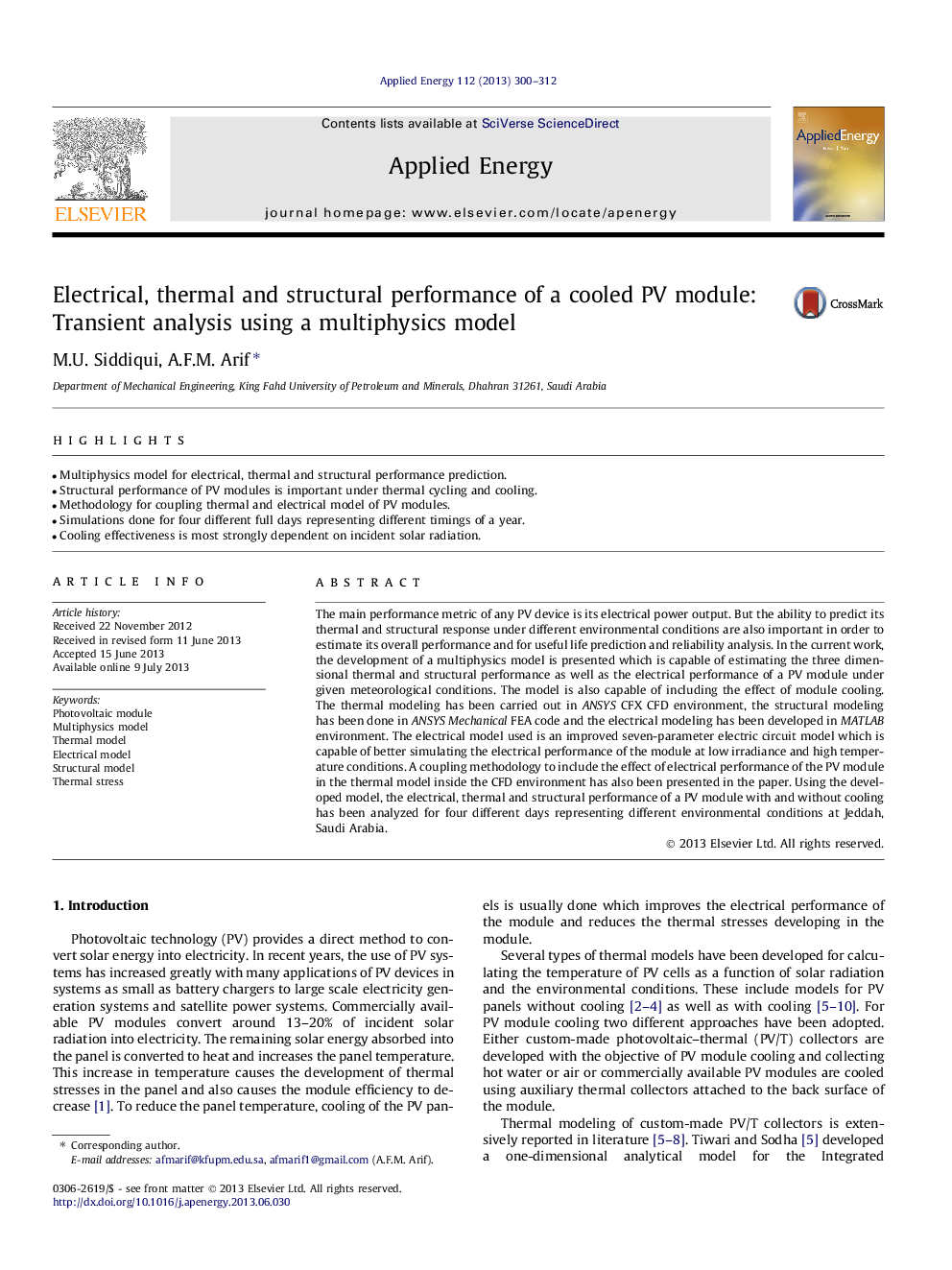| کد مقاله | کد نشریه | سال انتشار | مقاله انگلیسی | نسخه تمام متن |
|---|---|---|---|---|
| 242903 | 501913 | 2013 | 13 صفحه PDF | دانلود رایگان |

• Multiphysics model for electrical, thermal and structural performance prediction.
• Structural performance of PV modules is important under thermal cycling and cooling.
• Methodology for coupling thermal and electrical model of PV modules.
• Simulations done for four different full days representing different timings of a year.
• Cooling effectiveness is most strongly dependent on incident solar radiation.
The main performance metric of any PV device is its electrical power output. But the ability to predict its thermal and structural response under different environmental conditions are also important in order to estimate its overall performance and for useful life prediction and reliability analysis. In the current work, the development of a multiphysics model is presented which is capable of estimating the three dimensional thermal and structural performance as well as the electrical performance of a PV module under given meteorological conditions. The model is also capable of including the effect of module cooling. The thermal modeling has been carried out in ANSYS CFX CFD environment, the structural modeling has been done in ANSYS Mechanical FEA code and the electrical modeling has been developed in MATLAB environment. The electrical model used is an improved seven-parameter electric circuit model which is capable of better simulating the electrical performance of the module at low irradiance and high temperature conditions. A coupling methodology to include the effect of electrical performance of the PV module in the thermal model inside the CFD environment has also been presented in the paper. Using the developed model, the electrical, thermal and structural performance of a PV module with and without cooling has been analyzed for four different days representing different environmental conditions at Jeddah, Saudi Arabia.
Journal: Applied Energy - Volume 112, December 2013, Pages 300–312